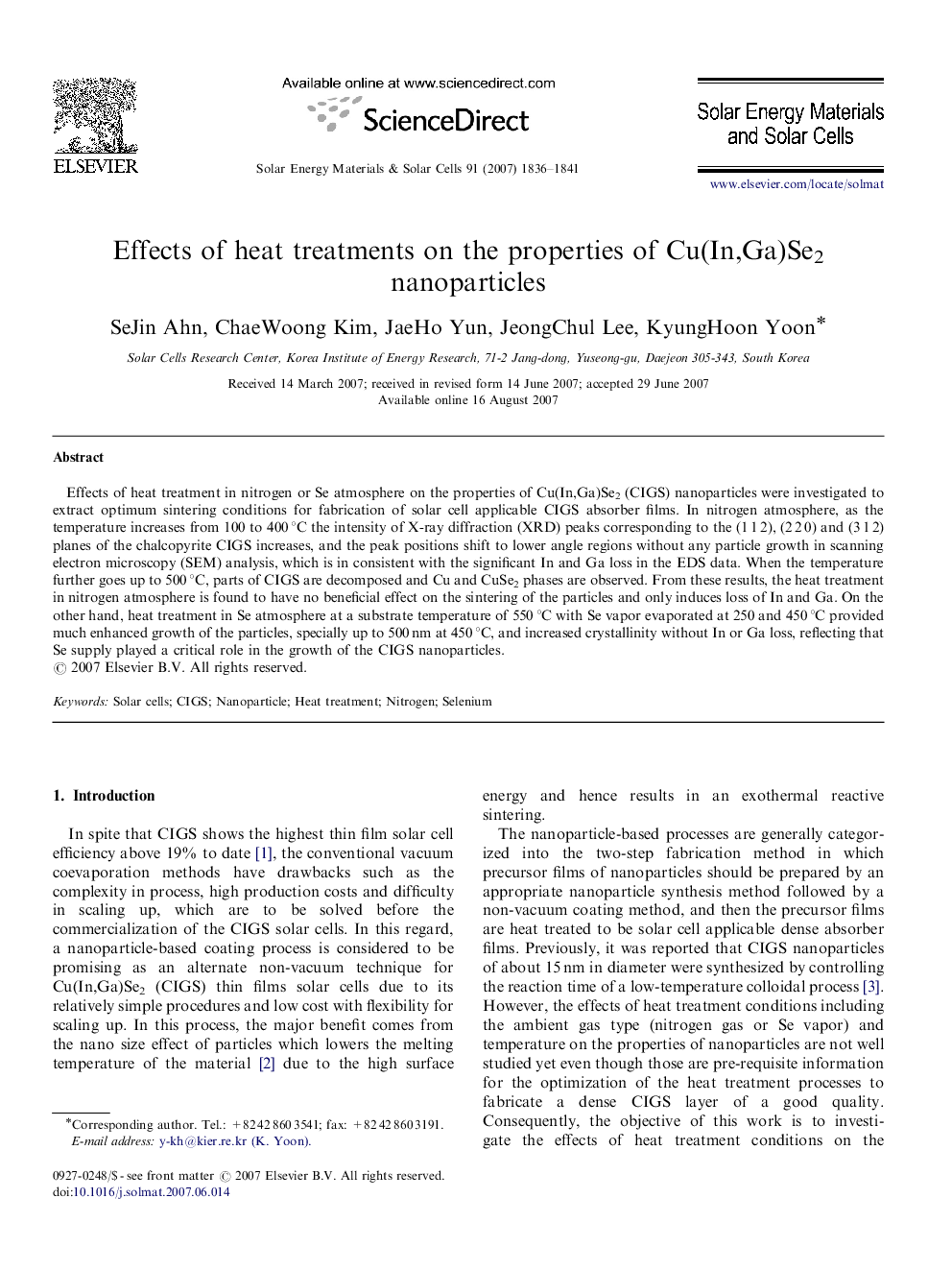| Article ID | Journal | Published Year | Pages | File Type |
|---|---|---|---|---|
| 81044 | Solar Energy Materials and Solar Cells | 2007 | 6 Pages |
Effects of heat treatment in nitrogen or Se atmosphere on the properties of Cu(In,Ga)Se2 (CIGS) nanoparticles were investigated to extract optimum sintering conditions for fabrication of solar cell applicable CIGS absorber films. In nitrogen atmosphere, as the temperature increases from 100 to 400 °C the intensity of X-ray diffraction (XRD) peaks corresponding to the (1 1 2), (2 2 0) and (3 1 2) planes of the chalcopyrite CIGS increases, and the peak positions shift to lower angle regions without any particle growth in scanning electron microscopy (SEM) analysis, which is in consistent with the significant In and Ga loss in the EDS data. When the temperature further goes up to 500 °C, parts of CIGS are decomposed and Cu and CuSe2 phases are observed. From these results, the heat treatment in nitrogen atmosphere is found to have no beneficial effect on the sintering of the particles and only induces loss of In and Ga. On the other hand, heat treatment in Se atmosphere at a substrate temperature of 550 °C with Se vapor evaporated at 250 and 450 °C provided much enhanced growth of the particles, specially up to 500 nm at 450 °C, and increased crystallinity without In or Ga loss, reflecting that Se supply played a critical role in the growth of the CIGS nanoparticles.
